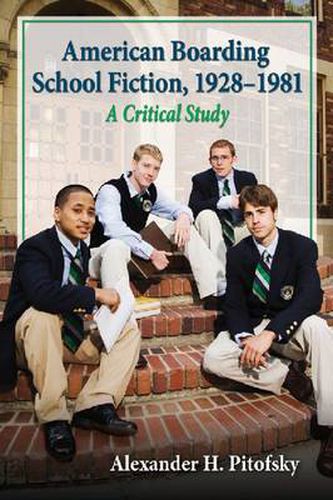Readings Newsletter
Become a Readings Member to make your shopping experience even easier.
Sign in or sign up for free!
You’re not far away from qualifying for FREE standard shipping within Australia
You’ve qualified for FREE standard shipping within Australia
The cart is loading…






When boarding-school fiction became popular in the 19th century, it tended to be warm and nostalgic, filled with sporting events, practical jokes, and schemes to get even with campus bullies. All of that changed in the era discussed in this book. Holden Caulfield, the narrator of J. D. Salinger’s The Catcher in the Rye, drops out of one prep school and is expelled from two others. The conflicts between students in John Knowles’s Devon School novels become so heated that two young men die. And in the controversial novel Good Times/Bad Times, James Kirkwood portrays the headmaster of a private academy as closeted, deeply neurotic, and infatuated with an 18-year-old who has recently enrolled at his school.
In spite of their unsettling images of anguish and cruelty, these and other American boarding-school novels have attracted large audiences and influenced countless school narratives in fiction, drama, television and film. Many stories have been written about British boarding-schools. This is the first study that explores the history of boarding-school fiction in the United States.
$9.00 standard shipping within Australia
FREE standard shipping within Australia for orders over $100.00
Express & International shipping calculated at checkout
When boarding-school fiction became popular in the 19th century, it tended to be warm and nostalgic, filled with sporting events, practical jokes, and schemes to get even with campus bullies. All of that changed in the era discussed in this book. Holden Caulfield, the narrator of J. D. Salinger’s The Catcher in the Rye, drops out of one prep school and is expelled from two others. The conflicts between students in John Knowles’s Devon School novels become so heated that two young men die. And in the controversial novel Good Times/Bad Times, James Kirkwood portrays the headmaster of a private academy as closeted, deeply neurotic, and infatuated with an 18-year-old who has recently enrolled at his school.
In spite of their unsettling images of anguish and cruelty, these and other American boarding-school novels have attracted large audiences and influenced countless school narratives in fiction, drama, television and film. Many stories have been written about British boarding-schools. This is the first study that explores the history of boarding-school fiction in the United States.